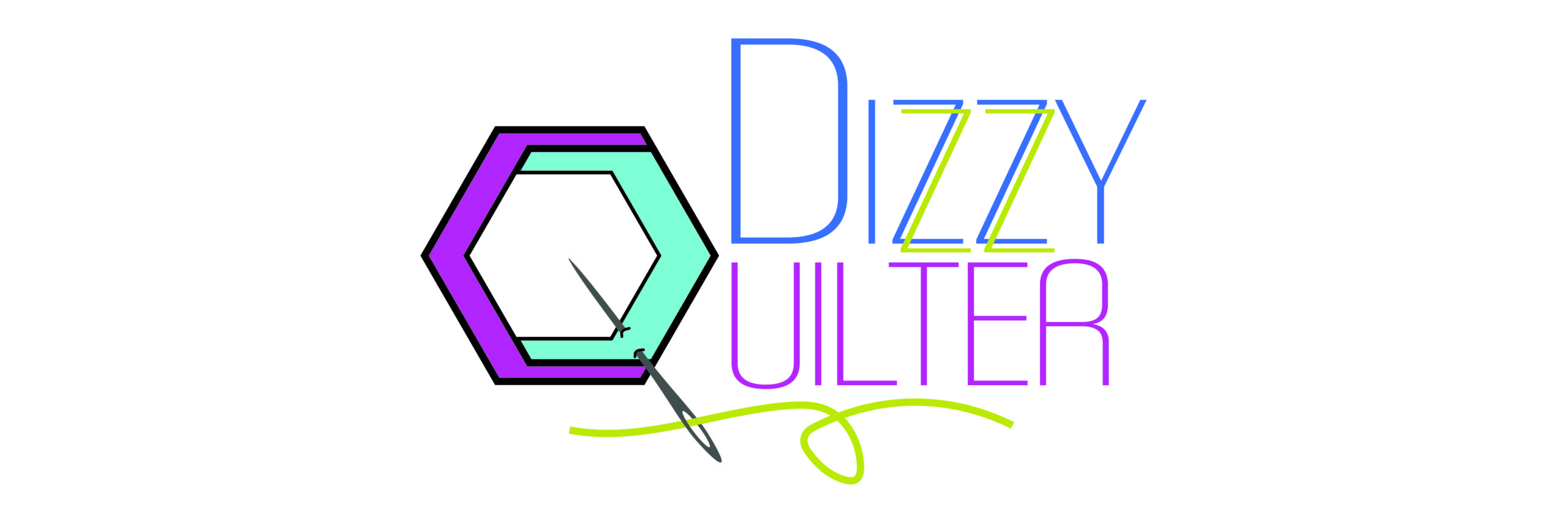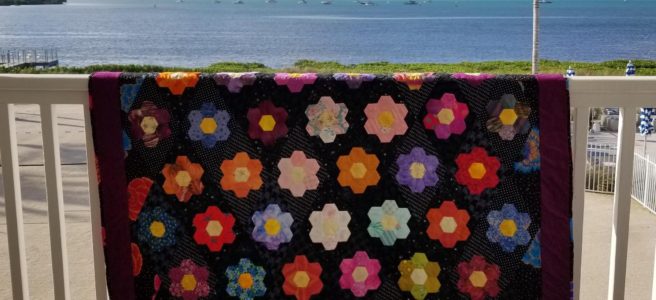By now you all know that I enjoy English Paper Piecing, EPP, maybe too much. Today I am teaching 12 new people my favorite finicky patchwork technique.

I wanted to offer a list of resources, in case anyone else wants to dip their toes in the water, without coming to take a class with me. Metuchen isn’t exactly a tourist destination, although we are the hometown of David Copperfield, and one of the Three Stooges is buried here. We also have a reed-choked pond that may or may not have something to do with Lucille Ball (stories vary.)
This is by no means a complete list of resources. These are just my favorite things. There is no way I could cover everything out there, and everyone who is well known for their work. Many of my links are affiliate links. If you use them, I will earn a small commission, but your price will not be affected. Thanks!
I’ve written several posts on EPP in the past. You can check them all out by selecting “English Paper Piecing” in the Categories box on the right.
My absolute favorite place to get my paper pieces is paperpieces.com. I am detail oriented with my EPP, and I require perfection in my pieces. I cannot achieve perfection when cutting them myself, so, for a reasonable price and fast shipping, I outsource that job.
The DIY Addict also has an assortment of papers, some of which are unique. Karen is also quite easy to work with, and has done special orders for me with a smile.
Many other online shops, as well as your local quilt shop, probably have some pieces available.
For shapes like hexagons, I don’t usually use paper at all. I have a large set of 1″ and 1/2″ hexies made from mylar. They are 15 years old and still going strong. You can find Quilt Patis here.
You will also see acrylic templates out there to help you cut your fabrics. I don’t use those myself. More often, I will just stick the paper down and cut around it. I’ve tried for kaleidoscopic fussy cutting – some folks, like Kitty Wilkin, make such amazing things that way. I have been too frustrated with my attempts in that arena.
I have a bunch of books on the topic that I enjoy
- Anything by Willyne Hammerstein is magical. I think she is on her fourth book now. I don’t always love her colorways, but her geometry is phenomenal. (She actually doesn’t do EPP, but you can always find papers for her patterns from Paper Pieces.com.)
- Fussy Cutter’s Club by Angie Wilson is beautiful.
- All Points Patchwork by Diane Gilleland is a great reference.
- The New Hexagon by Katja Marek is fun, and lends itself to exploration. Katja has a couple of different books, along with a calendar.
- Also by Katja is Distinctive Dresdens. Perfect for those of us who don’t want to do a quilt 100% with EPP.
I also have a few EPP folks I try to follow.
- Jodi from Tales of Cloth ONLY does EPP, and her work is excellent.
- Sue Daley is a master.
- Grit started me on my La Passion journey. She is in Germany, so there is a small language challenge, although many of her posts also have information in English.
- Reyna De Courcey is my kind of crazy. Her Hexatopia class gave me a great new perspective on making my own patterns.
Once the paper pieces have been acquired, I usually thread baste by tacking my pieces on the back. When that doesn’t work well, as with larger pieces or really acute angles, I prefer to stitch through the paper. I have been known to use glue occasionally, but it is not my favorite. I have used both Elmer’s glue sticks and the Sew Line Glue Pens. For cost, I prefer Elmer’s. The trade off is that it is not as narrow and easy to work with. I also don’t like removing the glued papers.
I also use Wonder Clips when glue basting, to hold the pieces while the glue dries a bit.
For thread, I typically baste with whatever spools are laying around and mostly empty. Old stuff, new stuff, whatever. I don’t like basting with Bottom Line or anything especially slippery, because it is slippery. For piecing, I like to match my thread colors, or use a neutral grey. I use Guterman or Aurifil 50 weight cotton most of the time for piecing. It is what I have the most of, and in a quilting emergency, I can get to Joann Fabrics and get a spool of Guterman immediately. I’ve tried 80 weight Aurifil, and it is not strong enough for me. I’ve used silk for invisible stitches, and I think it just isn’t worth the added expense. I save my silk for appliqué.
I try to always use a thread gloss. Right now my favorite is by Sew Fine. It keeps my threads from getting tangled. There are quite a few brands out there. Look for “thread conditioner.”
For needles, I use a Tulip Hiroshima Appliqué needle. It is nice and sharp, and since I work with batiks a lot, it is perfect.
Speaking of batiks. While batiks are by far my favorite fabric to work with when quilting, I would recommend avoiding them on your first forays into EPP. Because of their tighter weave, they are more challenging to stitch through. You will put more force on the needle, pushing the back of the needle into your finger, which hurts. For your first projects, use regular quilter’s cottons. If the fabric feels stiff, prewash it. Softer fabrics are more pleasant to work with by hand. I would also avoid anything that is a looser weave, like homespuns, linen blends, or peppered cottons. They tend to fray a lot, and with a long-term handwork project, they can be a challenge. If you must use them, give yourself a wider seam allowance than the usual 1/4″.
For stitching your pieces together, there are three different options. Whip stitching is the most common. There is also the ladder stitch, which promises invisible stitches. I personally am quite happy with the flat back stitch. You can find many, many tutorials for these techniques on YouTube. Watch a few – every teacher has a different style, and if the first one doesn’t resonate, try another.
Finally, you need to protect your fingers. At the very least, the one that pushes the needle needs help. I like to use stick on leather dots. They are easy to use and relatively cheap. If you don’t like the adhesive, there are zillions of different options for thimbles out there. Find one you like and use it. I also sometimes put a sticky dot on my left thumb, over my fingernail. That is where I consistently jab myself with my needle.
Oh, and last, but not least, if you are experiencing fatigue or pain in your fingers from pulling the needle, get a finger cot. They look like tiny condoms, so incite delightfully awkward conversations with teenage children when found lying around the house. My finger gets sweaty with mine, but my thumb doesn’t ache and whisper about arthritis. Unfortunately, you need to buy a large amount online if you can’t find them at your local pharmacy. I have a lifetime supply for myself and my descendants.
If I’ve missed anything, let me know. I’ll update this post as I think of other information that might be helpful. Happy Quilting!


Hi Jen! I forgot the name of them until I read your post – I have a whole slew of Quilt Patis as well. Where they are hiding is beyond me . . . somewhere safe. Thanks for all the great tips you’ve shared today. Should I get back into EPP – we all know it’s inevitable I’ll be doing it soon as every event is circular. ~smile~ Roseanne
I just love it. I have completed quite a few projects, and every time I start a new one, I remember why I like it so much.
I like EPP – it’s so nice to just sit and hand stitch small pieces. My problem comes when I start to piece them together. I have a whole box of hexagons, but don’t know what to do with them as I had no plan when I started. 🙂 Guess I just need to start and get in some practice! Thanks for all the info in this post Jen!